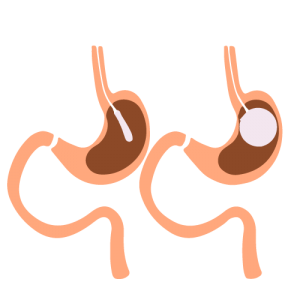
Best Surgeon For Gastric Baloon In Dubai
Dr. Rohit Kumar
MD, MS, FMABS, FIASGO, FIAGES, FMAS, FHBPS, FACS
Endoscopic Intragastric Balloon Insertion
Inserting the balloon into your stomach is an option for weight management. This is done with a gastroscopy under sedation. After six months, the balloon will be removed. The projected weight loss is usually about 15% of the original weight.

BooK Now
FAQs
Why Endoscopic Intragastric Balloon Insertion?
This is a simple, non-surgical procedure done for patients who are above BMI 27 but below the BMI criteria for obesity surgery. It is also performed for patients who are too ill to undergo surgery, and this balloon insertion is safe with no scars on the abdominal wall skin.
How Does The Endoscopic Intragastric Balloon Help Me Lose Weight? Will I Gain Back Weight After Removal Of The Balloon?
Upon insertion of the balloon, the balloon occupies space in your stomach and reduces the stomach cavity by a third. This suppresses your appetite and you will feel full more quickly and for longer time. You will naturally eat less without having to try to.
For most patients, the intragastric balloon serves to kick start their weight loss journey. Thereafter, patients will have to play a part by eating a balanced diet and leading an active lifestyle to maintain their weight. During the first six months, with a strong support team, you will develop healthy habits such as portion control and exercise. These effects stay with you for life.
When Will I Be Able To Eat Normally After Insertion Of The Intragastric Balloon?
For the first three days after the insertion, you will have to consume a liquid diet to adjust to the balloon in your stomach. From the 4th to the 14th day, gradually add soft foods such as porridge and pureed foods. From the 14th day onwards, you can resume a normal and healthy diet that is low in sugar, fat and carbohydrates.
Am I Eligible For An Intragastric Balloon Procedure?
The Intragastric Balloon is a popular option for weight loss among people who have tried diet and exercise but not been able to lose weight or keep it off successfully. It is also common among people who have serious health conditions related to obesity.
What Are The Risks And Complications Associated With The Intragastric Balloon?
Most people who have undergone the Intragastric Balloon procedure do not have any complications. That being said, abdominal discomfort, nausea and vomiting are common in the first three days after the insertion of the balloon. Complications such as leakage and deflation of balloon and are extremely rare and can be managed easily.
What To Expect?
Before the procedure
- Fasting is required for 8 hours prior to your procedure.
- All regular medications will be stopped unless absolutely necessary under a doctor’s supervision.
On the day of the procedure
- This procedure is usually done as a day surgery procedure. It usually takes about 30 minutes to complete it.
- Your surgeon will advise you on the specific details.
After the procedure
- You will be allowed to drink fluids for the first week. However, allow your appetite to guide you. Do not force the volume of liquids.
- If you experience nausea, stay with clear liquids until it resolves. This may take up to 3 days.
- Medication for nausea, protection for the stomach wall and stomach cramps will be provided.
- Oral intake will have to be in small volume and taken slowly.
- Your doctor will advise you on the type of food to be consumed and will encourage you to embark on an exercise regime.

Specialist General Surgeon
Dr. Rohit Kumar is a reputed Specialist General Surgeon with a keen focus on Minimal Access and Bariatric Surgery. Having decades of experience in the medical field, Dr. Kumar surpasses all forms of excellence and has the drive to learn more. He’s headed surgical departments in renowned hospitals and has undertaken specialized fellowships on several topics.
Dubai,UAE